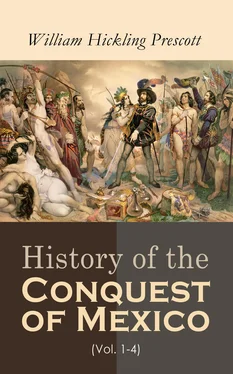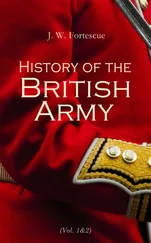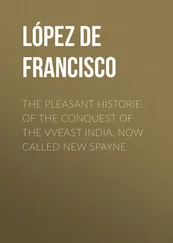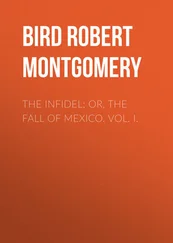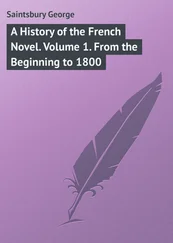[226]P. Martyr, De Orbe Novo, Decades (Compluti, 1530), dec. 5, p. 191.—Acosta, lib. 4, cap. 3.—Humboldt, Essai politique, tom. iii. pp. 114-125.—Torquemada, Monarch. Ind., lib. 13, cap. 34.
“Men wrought in brass,” says Hesiod, “when iron did not exist.”
χαλκῴ δʹ ἐργάϛοντο μέλας δʹ οὐκ ἒσκε σίδηρο
Hesiod, Ἒργα καὶ Ἥμεραι.
The Abbé Raynal contends that the ignorance of iron must necessarily have kept the Mexicans in a low state of civilization, since without it “they could have produced no work in metal, worth looking at, no masonry nor architecture, engraving nor sculpture.” (History of the Indies, Eng. trans., vol. iii. b. 6.) Iron, however, if known, was little used by the ancient Egyptians, whose mighty monuments were hewn with bronze tools; while their weapons and domestic utensils were of the same material, as appears from the green color given to them in their paintings.
[227]Gama, Descripcion, Parte 2, pp. 25-29.—Torquemada, Monarch. Ind., ubi supra.
[228]Sahagun, Hist. de Nueva-España, lib. 9, cap. 15-17.—Boturini, Idea, p. 77.—Torquemada, Monarch. Ind., loc. cit.—Herrera, who says they could also enamel, commends the skill of the Mexican goldsmiths in making birds and animals with movable wings and limbs, in a most curious fashion. (Hist. general, dec. 2, lib. 7, cap. 15.) Sir John Maundeville, as usual,
“with his hair on end
At his own wonders,”
notices the “gret marvayle” of similar pieces of mechanism at the court of the grand Chane of Cathay. See his Voiage and Travaile, chap. 20.
[229]Herrera, Hist. general, dec. 2, lib. 7, cap. 11.—Torquemada, Monarch. Ind., lib. 13, cap. 34.—Gama, Descripcion, Parte 2, pp. 27, 28.
[230]“Parece, que permitia Dios, que la figura de sus cuerpos se asimilase á la que tenian sus almas por el pecado, en que siempre permanecian.” Monarch. Ind., lib. 13, cap. 34.
[231]Clavigero, Stor. del Messico, tom. ii. p. 195.
[232]Gama, Descripcion, Parte 1, p. 1. Besides the plaza mayor , Gama points out the Square of Tlatelolco, as a great cemetery of ancient relics. It was the quarter to which the Mexicans retreated, on the siege of the capital.
[233]Torquemada, Monarch. Ind., lib. 13, cap. 34.—Gama, Descripcion, Parte 2, pp. 81-83.—These statues are repeatedly noticed by the old writers. The last was destroyed in 1754, when it was seen by Gama, who highly commends the execution of it. Ibid.
[234]This wantonness of destruction provokes the bitter animadversion of Martyr, whose enlightened mind respected the vestiges of civilization wherever found. “The conquerors,” he says, “seldom repaired the buildings that were defaced. They would rather sack twenty stately cities than erect one good edifice.” De Orbe Novo, dec. 5, cap. 10.
[235]Gama, Descripcion, Parte 1, pp. 110-114.—Humboldt, Essai politique, tom. ii. p. 40.—Ten thousand men were employed in the transportation of this enormous mass, according to Tezozomoc, whose narrative, with all the accompanying prodigies, is minutely transcribed by Bustamante. The Licentiate shows an appetite for the marvellous which might excite the envy of a monk of the Middle Ages. (See Descripcion, nota, loc. cit.) The English traveller Latrobe accommodates the wonders of nature and art very well to each other, by suggesting that these great masses of stone were transported by means of the mastodon, whose remains are occasionally disinterred in the Mexican Valley. Rambler in Mexico, p. 145.
[236][In 1875 Dr. Augustus Le Plongeon, having successfully interpreted certain hieroglyphic inscriptions at Chichen Itza, unearthed, at a distance of four hundred yards from the palace at that place, a statue of Chaac Mol, or Balam (the tiger king), the greatest of the Itza rulers. It was seized by the Mexican officials and sent to the city of Mexico. There, in the courtyard of the National Museum, it may be seen to-day, just opposite its exact duplicate, which was found buried, either in the plaza of Mexico or somewhere in Tlaxcala, some years ago. The story of the discovery seems marvellous in the extreme, but photographs taken at many stages of the exhumation dispel doubt as to its truth. For a very full report upon the whole matter, see the paper by Stephen Salisbury, president of the American Antiquarian Society, in the Proceedings of that society for 1877-78, pp. 70-119.—M.]
[237]A great collection of ancient pottery, with various other specimens of Aztec art, the gift of Messrs. Poinsett and Keating, is deposited in the Cabinet of the American Philosophical Society, at Philadelphia. See the Catalogue, ap. Transactions, vol. iii. p. 510. Another admirable collection may be seen in the Museum of Natural History in New York.—M.
[238]Hernandez, Hist. Plantarum, lib. 6, cap. 116.
[239]Carta del Lic. Zuazo, MS.—Herrera, Hist. general, dec. 2, lib. 7, cap. 15.—Boturini, Idea, p. 77.—It is doubtful how far they were acquainted with the manufacture of silk. Carli supposes that what Cortés calls silk was only the fine texture of hair, or down, mentioned in the text. (Lettres Américaines, tom. i. let. 21.) But it is certain they had a species of caterpillar, unlike our silkworm, indeed, which spun a thread that was sold in the markets of ancient Mexico. See the Essai politique (tom. iii. pp. 66-69), where M. de Humboldt has collected some interesting facts in regard to the culture of silk by the Aztecs. Still, that the fabric should be a matter of uncertainty at all shows that it could not have reached any great excellence or extent.
[240]Carta del Lic. Zuazo, MS.—Acosta, lib. 4, cap. 37.—Sahagun, Hist. de Nueva-España, lib. 9, cap. 18-21.—Toribio, Hist. de los Indios, MS., Parte 1, cap. 15.—Rel. d’un gentil’ huomo, ap. Ramusio, tom. iii. fol. 306.—Count Carli is in raptures with a specimen of feather-painting which he saw in Strasbourg. “Never did I behold anything so exquisite,” he says, “for brilliancy and nice gradation of color, and for beauty of design. No European artist could have made such a thing.” (Lettres Américaines, let. 21, note.) There is still one place, Patzquaro, where, according to Bustamante, they preserve some knowledge of this interesting art, though it is practised on a very limited scale and at great cost. Sahagun, ubi supra, nota.
[241]“O felicem monetam, quæ suavem utilemque præbet humano generi potum, et a tartareâ peste avaritiæ suos immunes servat possessores, quod suffodi aut diu servari nequeat!” De Orbe Novo, dec. 5, cap. 4.—(See, also, Carta de Cortés, ap. Lorenzana, p. 100, et seq.—Sahagun, Hist. de Nueva-España, lib. 8, cap. 36.—Toribio, Hist. de los Indios, MS., Parte 3, cap. 8.—Carta del Lic. Zuazo, MS.) The substitute for money throughout the Chinese empire was equally simple in Marco Polo’s time, consisting of bits of stamped paper, made from the inner bark of the mulberry-tree. See Viaggi di Messer Marco Polo, gentil’ huomo Venetiano, lib. 2, cap. 18, ap. Ramusio, tom. ii.
[242]“Procurad de saber algun oficio honroso , como es el hacer obras de pluma y otros oficios mecánicos.... Mirad que tengais cuidado de lo tocante á la agricultura.... En ninguna parte he visto que alguno se mantenga por su nobleza.” Sahagun, Hist. de Nueva-España, lib. 6, cap. 17.
[243]Col. de Mendoza, ap. Antiq. of Mexico, vol. i. Pl. 71; vol. vi. p. 86.—Torquemada, Monarch. Ind., lib. 2, cap. 41.
[244]Sahagun, Hist. de Nueva-España, lib. 9, cap. 4, 10-14.
[245]Ibid., lib. 9, cap. 2.
[246]Sahagun, Hist. de Nueva-España, lib. 9, cap. 2, 4.—In the Mendoza Codex is a painting representing the execution of a cacique and his family, with the destruction of his city, for maltreating the persons of some Aztec merchants. Antiq. of Mexico, vol. i. Pl. 67.
Читать дальше
